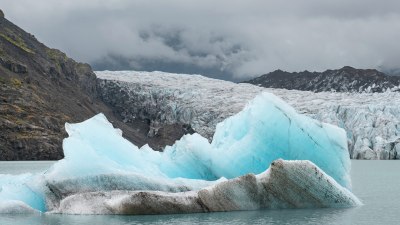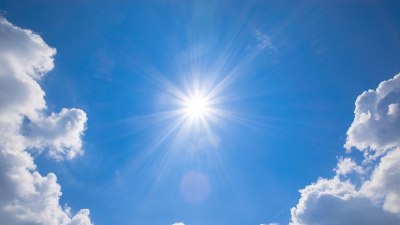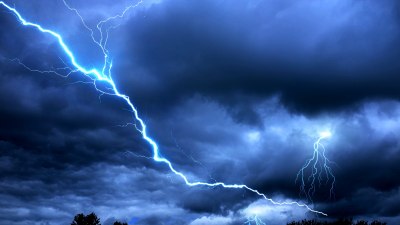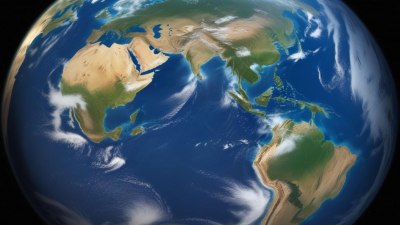How Jet Streams Shift and Why They Control Your Weather
Explore the science behind jet streams, their shifts, and their crucial role in shaping weather patterns globally.

Jet streams are fast-flowing, narrow air currents in the atmosphere that play a vital role in weather patterns across the globe. Understanding how jet streams shift and influence weather is essential to predicting climate changes and extreme weather events. This article delves into the mechanics of jet streams, their behavior, and their significant impact on our daily weather conditions.
What Are Jet Streams?
Jet streams are high-altitude rivers of wind that flow from west to east, typically found at altitudes of about 10 kilometers (33,000 feet) in the atmosphere. They form at the boundaries between different air masses, particularly where warm, moist air meets cold, dry air. The most well-known jet streams are the polar jet and the subtropical jet, which are named based on their latitudinal locations.
The Mechanics of Jet Streams
Jet streams are driven by the Earth's rotation and the temperature differences between the equator and the poles. The rotation of the Earth causes the Coriolis effect, which influences wind patterns. As warm air rises near the equator and cold air sinks towards the poles, a gradient forms, creating these powerful winds. This dynamic movement of air is highly variable and can shift based on seasonal changes, weather systems, and even human-induced climate change.
Shifts in Jet Streams
Jet streams are not static; they constantly change in response to varying atmospheric conditions. These shifts can occur due to several factors, including surface temperatures, ocean currents, and land-sea contrasts. For example, during winter, the polar jet stream tends to dip further south towards the equator, bringing colder air and winter storms to mid-latitude regions.
Conversely, in the summer, the polar jet stream typically retreats northwards, allowing warmer air to move into areas that were previously cooler. These seasonal shifts are crucial for dictating local weather patterns, including temperature fluctuations, precipitation levels, and storm intensity.
Jet Streams and Climate Change
Recent studies indicate that climate change may be influencing the behavior of jet streams. Warming temperatures can alter the temperature gradients that drive jet streams, leading to more erratic patterns. For instance, a weakened polar jet stream has been linked to prolonged weather events, such as extended heat waves or excessive rainfall.
The phenomenon of 'blocking' can occur when the jet stream becomes wavy, allowing weather systems to remain stagnant in one area for an extended period. This has profound implications for severe weather occurrences and can exacerbate heat waves, droughts, and heavy precipitation events.
The Impact of Jet Streams on Weather
The influence of jet streams extends beyond temperature; they significantly affect precipitation patterns and storm development. When a jet stream dips or rises, it can create areas of low and high pressure, leading to changing weather conditions. For example, a dip in the jet stream can indicate the potential for stormy weather, while a rise can signal clear skies.
Furthermore, jet streams also play a crucial role in the development of severe weather phenomena, such as hurricanes and tornadoes. By steering storm systems and providing the necessary wind shear, jet streams can either strengthen or weaken these weather events, thereby shaping their impact.
How Jet Streams Affect Your Daily Weather
The impacts of jet streams are felt on a daily basis. When the jet stream dips down into lower latitudes, regions can experience unseasonably cold temperatures, snow, and even severe blizzards. Conversely, when the jet stream moves northward, areas can enjoy warmer temperatures and dry conditions.
For instance, a strong polar jet stream in winter can lead to cold air outbreaks across the Midwest and Northeast United States, while the subtropical jet may bring moisture and heavy rain to the Southern states. Understanding these jet stream patterns allows meteorologists to make better weather predictions and gives people insights into their local weather forecasts.
Jet Streams and Weather Forecasting
Weather forecasting heavily relies on the analysis of jet stream patterns. Meteorologists use satellites and advanced computer models to study the behavior of jet streams, allowing for accurate short-term and long-term forecasts. By monitoring the position and strength of jet streams, forecasters can predict major weather events, such as winter storms or summer heat waves.
Advanced numerical models simulate the atmosphere's behavior, factoring in jet streams to predict how weather systems will evolve. These predictions are vital for public safety, agriculture, and emergency preparedness, helping communities to adapt and respond to changing weather conditions.
The Future of Jet Streams
As climate change continues to impact the planet, the future behavior of jet streams is uncertain. Scientists are actively researching how ongoing global warming may further alter jet stream patterns. Increased understanding of these shifts is crucial for making accurate predictions about future weather patterns and climate scenarios.
Some models suggest that a more erratic jet stream could lead to an increase in extreme weather events, adding to the list of challenges posed by climate change. Adapting to these changes will require ongoing research and adjustments in our approach to weather forecasting and climate resilience strategies.
Jet streams are a central element of our weather systems, affecting everything from temperature to precipitation patterns. Their shifting patterns are influenced by seasonal changes, climate variability, and human-induced climate change. Understanding the dynamics of jet streams is essential for accurate weather forecasting and for adapting to the challenges posed by changing climate systems. As we continue to monitor and analyze these powerful air currents, we can better prepare for the impacts they have on our daily lives and the environment.











